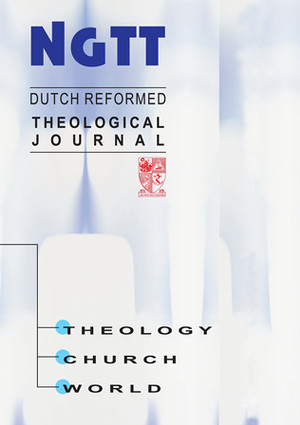“Imaging the Image of God”: David H. Kelsey oor die Imago Dei
DOI:
https://doi.org/10.5952/54-1-2-314Keywords:
Imago Dei, theological anthropology, Christocentric, Eccentric Existence, David KelseyAbstract
The doctrine of the imago Dei has long functioned as a core theological affirmation in theological anthropologies. However, interpretations of what it means for human beings to be created in the image of God vary widely, which, in turn, has implications for the discourses on human uniqueness, human dignity, human rights and ecological sustainability, among others. This article traces four normative interpretations of the imago Dei – substantive, functional, relational and eschatological – and goes on to argue that these four interpretations need not be understood as mutually exclusive, as they are often treated, but could, within an unsystematic systematic whole, be held together. This article analyses David Kelsey’s understanding of the imago Dei within his recently published theological anthropology, Eccentric Existence (2009), to illustrate how these four interpretations could function together.
Downloads
Published
How to Cite
Issue
Section
License
Copyright of all NGTT material belongs to the Pieter de Waal Neethling Trust (PDWN Trust). The PDWN Trust is a trust fund established in 1932 with the aim of promoting quality theological research and publications.
The PDWN Trust pledges to maintain a legitimate scholarly record of the author's work and to defend the author's article against plagiarism and copyright infringement.
The PDWN Trust is committed to full Open Source publishing. This means that all articles published in NGTT will gradually be made freely available online. Authors maintain the right to:
- Share and self-archive their work.
- Make printed copies of their article for educational use.
- Present their article at a meeting or conference and distribute printed copies of the article
- Adapt and expand their published journal article to make it suitable for their thesis or dissertation.
- Republish the article (ensuring that the original article is cited as published in NGTT).
For any questions or queries in this regard, please contact the Editor.


